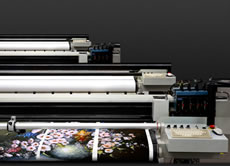
About billboards, 1952 print

Standard Prints
paintingandframe.com is one of the largest giclee printing companies in the world experience producing museum-quality prints. All of our Jacob Lawrence Billboards, 1952 prints are waterproof, produced on state-of-the-art, professional-grade Epson printers.
We use acid-free cotton canvas with archival inks to guarantee that your prints last a lifetime without fading or loss of color. Jacob Lawrence Billboards, 1952 art print includes a 2" white border to allow for future stretching on stretcher bars.
Billboards, 1952 prints ship within 2 - 3 business days with secured tubes.
If Jacob Lawrence Billboards, 1952 is printed by machine on textured canvas, it takes about 5 working days to your address; if you choose it as hand painted reproduction, it takes about 18 working days to your address. Please keep in mind that all of our products are waterproof on textured canvas! We ship Billboards, 1952 all over the world.
Our return policy is very simple:
If you're not happy with Jacob Lawrence Billboards, 1952 that you made on paintingandframe.com, for any reason, you can return it to us within 50 days of the order date. As soon as it arrives, we'll issue a full refund for the entire purchase price. Please note - paintingandframe.com does not reimburse the outgoing or return shipping charges unless the return is due to a defect in quality.
We sell thousands of pieces of artwork each month - all with a 100% money-back guaranteed.
If you want to purchase mueseum artwork at discount price, why not give us a try? You will save a lot more!

Forward

The Brown Angel

Street Orator's Audience

Barber Shop

Dreams #1

The Migration Series, Panel No. 1: During World War I There Was a Great Migration North by Southern African Americans.

The Migration Series, Panel No. 5: Migrants Were Advanced Passage on The Railroads, Paid for by Northern Industry. Northern Industry Was to Be Repaid

The Migration Series, Panel No. 9: They Left Because The Boll Weevil Had Ravaged The Cotton Crop.

The Migration Series, Panel No. 11: Food Had Doubled in Price Because of The War.

The Migration Series, Panel No. 13: The Crops Were Left to Dry And Rot. There Was No One to Tend Them.

The Migration Series, Panel No. 31: The Migrants Found Improved Housing When They Arrived North.

The Migration Series, Panel No. 45: The Migrants Arrived in Pittsburgh, One of The Great Industrial Centers of The North.

The Migration Series, Panel No. 47: As The Migrant Population Grew, Good Housing Became Scarce.

The Migration Series, Panel No. 57: The Female Workers Were The Last to Arrive North

Subway Home From Work

The Migration Series, Panel No. 7: The Migrant, Whose Life Had Been Rural And Nurtured by The Earth, Was Now Moving to Urban Life Dependent on Industr